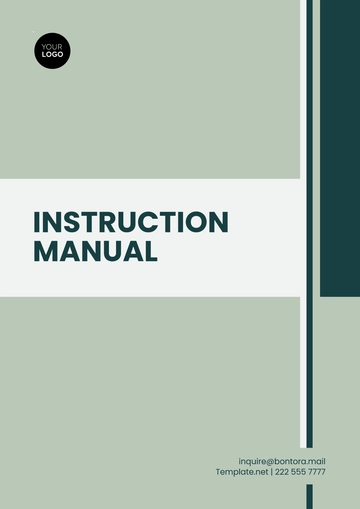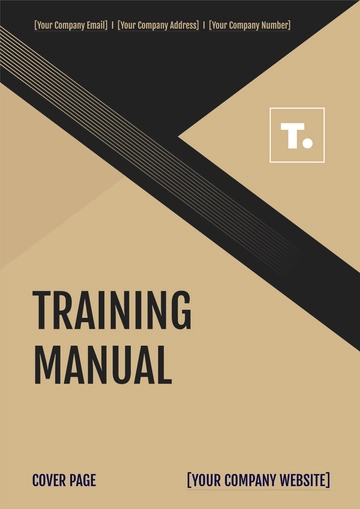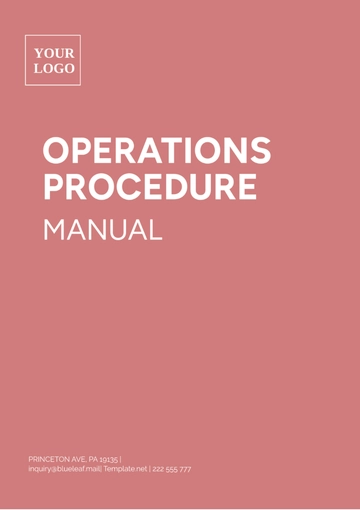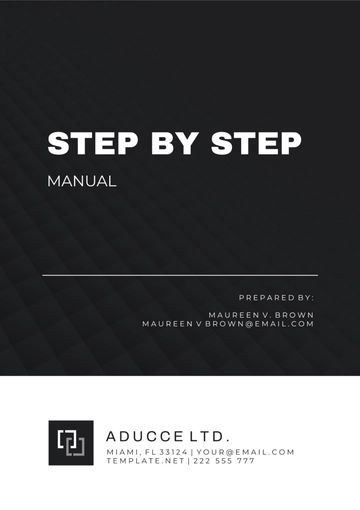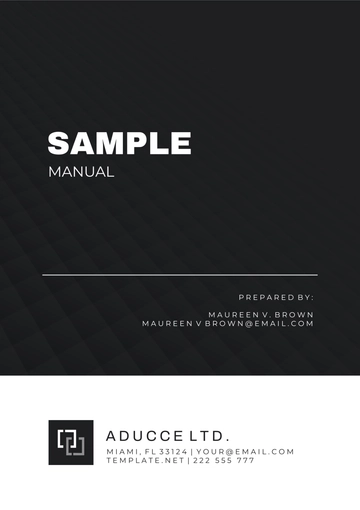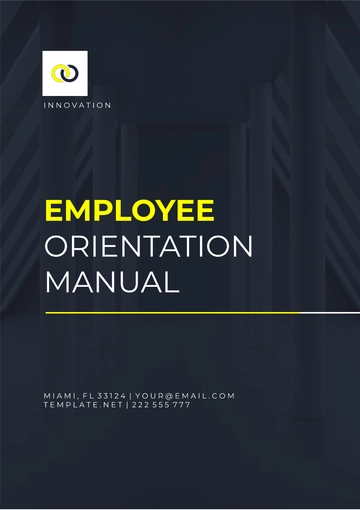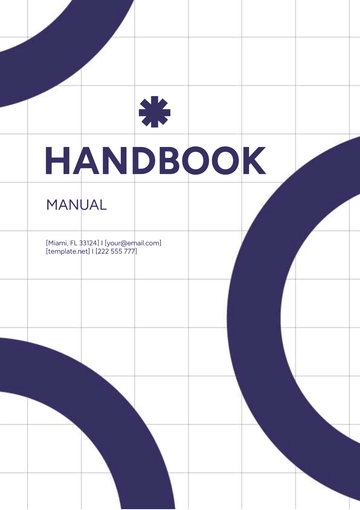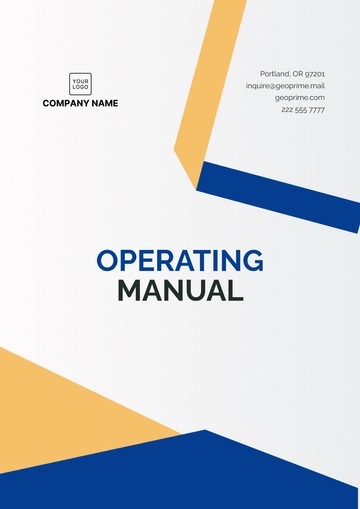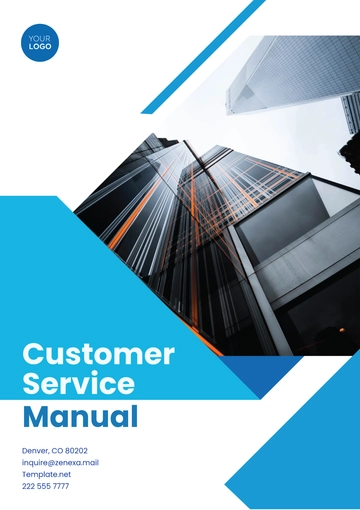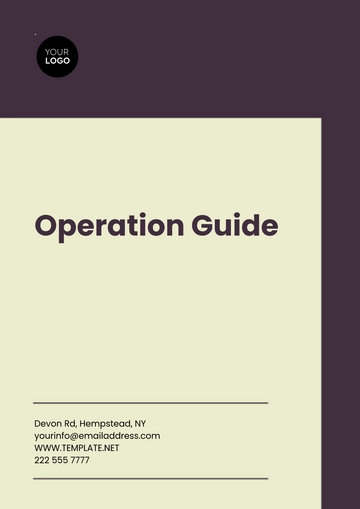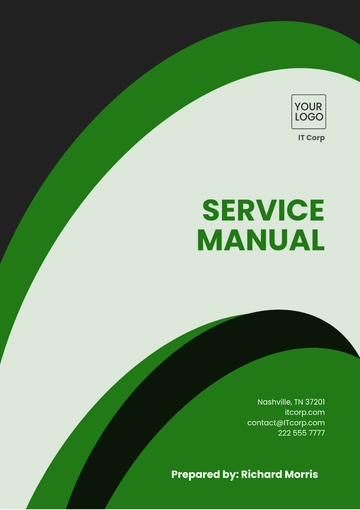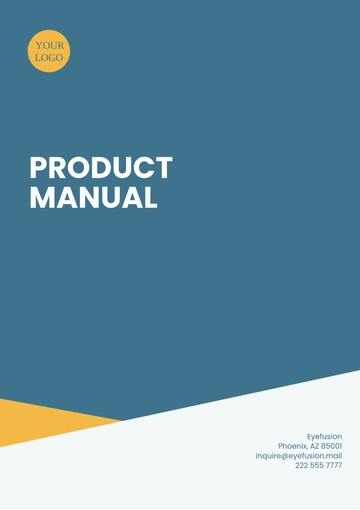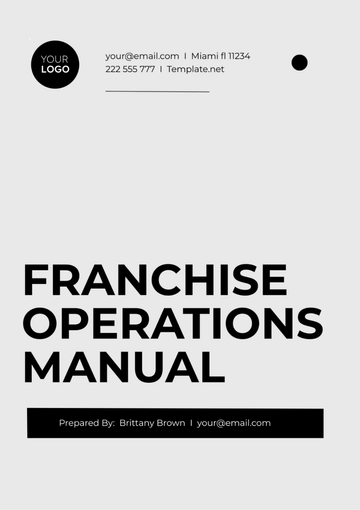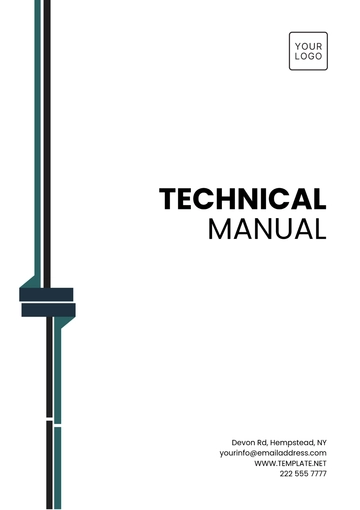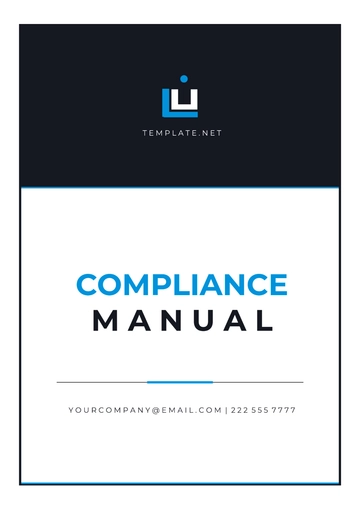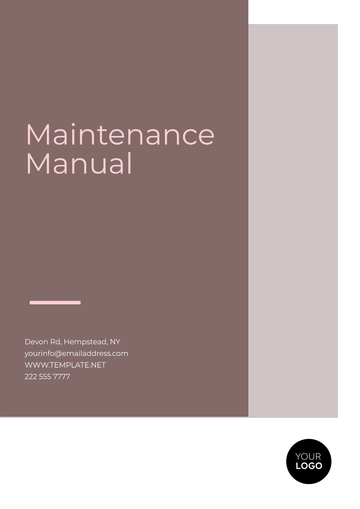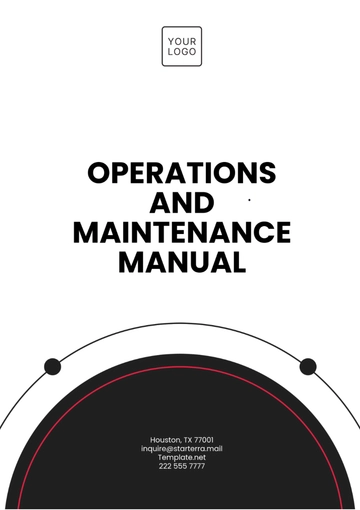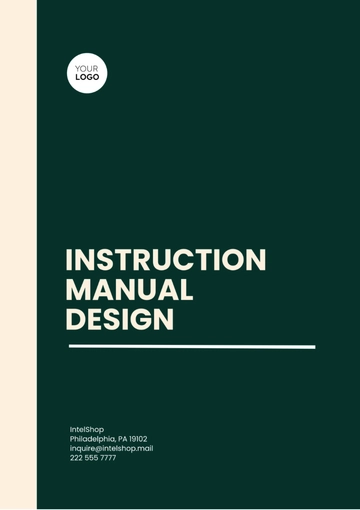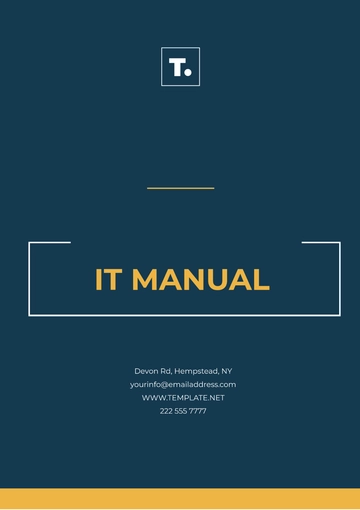Free Agriculture Customer Management Manual

I. Introduction
The Agriculture Customer Management Manual for [Your Company Name] provides essential guidance on best practices for ensuring efficient, effective, and professional interactions with customers in the agriculture sector. This comprehensive manual outlines strategic approaches and standard procedures designed to achieve high levels of customer satisfaction and foster long-term, positive relationships with clients. By adhering to the best practices outlined in this manual, employees will be equipped to handle customer inquiries, resolve issues, and manage expectations with expertise and empathy. The manual aims to not only meet but surpass customer expectations by setting a high standard for professionalism, responsiveness, and service excellence.
Furthermore, this manual ensures that all customer interactions at [Your Company Name] comply with relevant US agricultural laws and industry regulations. It includes detailed instructions on utilizing our Customer Relationship Management (CRM) system, managing customer feedback, and implementing continuous improvement practices. By implementing the strategies and procedures outlined here, employees will contribute to the company’s growth and success while upholding legal standards and reinforcing our commitment to exceptional customer service. This manual is a critical resource for all staff members, providing the tools and knowledge needed to build strong, enduring customer relationships and support [Your Company Name]’s overall objectives in the agriculture industry.
II. Getting Started
In this section, we focus on the foundational steps for building strong customer relationships. Understanding customer needs and creating detailed customer profiles are critical first steps in delivering exceptional service and fostering long-term client satisfaction. This section provides guidance on effectively gathering information and organizing it to better meet the needs of your agricultural customers.
1. Understanding Customer Needs
Understanding the specific needs of your agricultural customers is a fundamental aspect of delivering exceptional service and ensuring satisfaction. To achieve this, it is essential to employ a range of methods for gathering insights into what your customers require and value. One effective approach is to conduct surveys, which can be distributed through various channels such as email, phone, or in-person at events. Surveys should include questions that cover aspects such as customer satisfaction, product preferences, and service expectations.
Direct interactions with customers also play a crucial role in understanding their needs. Engaging in meaningful conversations during farm visits, sales meetings, or customer service calls allows you to gather valuable feedback and identify areas for improvement. Active listening and asking open-ended questions can help uncover the specific challenges and requirements your customers face.
Additionally, market research is a valuable tool for understanding broader industry trends and customer behavior. This can include analyzing market reports, studying competitors, and staying updated with agricultural industry news. Combining these methods will provide a comprehensive view of your customers’ needs and help tailor your services to meet their expectations effectively.
2. Preparing Customer Profiles
Creating detailed customer profiles is a crucial step in managing agricultural customer relationships effectively. A well-developed customer profile includes comprehensive information that helps you understand and anticipate the needs of each client. Start by gathering contact information, such as phone numbers, email addresses, and mailing addresses, to ensure you can communicate with customers easily.
Next, document the purchase history of each customer, including details of past transactions, product preferences, and buying patterns. This information helps identify trends and preferences, allowing you to offer personalized recommendations and anticipate future needs.
Include customer preferences in the profile to record any specific requests or requirements, such as preferred communication methods, product specifications, or service expectations. Understanding these preferences allows you to tailor your approach to meet their individual needs.
Additionally, note any relevant data such as key challenges the customer faces, feedback from previous interactions, and insights gained from market research. This data provides a more holistic view of the customer and helps in crafting strategies that align with their goals and preferences.
III. Tools and Resources
In the Tools and Resources section of the Agriculture Customer Management Manual for [Your Company Name], we explore the various tools and platforms that are essential for optimizing customer management processes. These resources are integral to streamlining your workflow, from managing customer relationships and analyzing market trends to effective communication and feedback collection. By utilizing these tools, you can enhance your efficiency, improve customer interactions, and support your strategic objectives in the agricultural sector. This section serves as a guide to the most effective tools available, helping you leverage technology to meet and exceed customer expectations.
1. Customer Relationship Management (CRM) Software
2. Market Analysis Tools
3. Communication Platforms
4. Data Management Tools
5. Customer Feedback Tools
6. Project Management Tools
7. Social Media Management Tools
8. Documentation and Reporting Tools
9. Scheduling Tools
10. Agricultural Data and Research Platforms
IV. Step-by-Step Instructions
In the Step-by-Step Instructions section of the Agriculture Customer Management Manual for [Your Company Name], we provide clear, practical steps for creating and managing customer profiles in your CRM system. Following these instructions will help you ensure that each customer profile is accurately created and maintained, which is crucial for effective customer management and relationship building. This guide is designed to help you use your CRM system efficiently and consistently.
How to Create a Customer Profile in the CRM System
Log in to your CRM system using your credentials.
Navigate to the 'Customers' section in the main dashboard.
Click on 'Add New Customer' or an equivalent option.
Enter the customer's name, contact information, and any other required fields.
Save the profile and ensure all data is accurate and complete.
Repeat for each new customer. Ensure profiles are updated regularly.
V. Common Customer Scenarios and Solutions
In the Common Customer Scenarios and Solutions section of the Agriculture Customer Management Manual for [Your Company Name], we address typical customer interactions and provide effective strategies for managing them. This section offers practical solutions for common issues you might encounter, from handling product dissatisfaction to addressing bulk purchase requests. Understanding these scenarios and knowing how to respond effectively will help you maintain positive relationships with customers and resolve challenges efficiently.
The following table outlines common customer scenarios along with recommended solutions to help you navigate these situations with confidence.
Scenario | Solution |
|---|---|
Customer is dissatisfied with a product. | Offer a refund or replacement and ensure the quality issue is addressed promptly. |
Customer requires advice on product usage. | Provide detailed instructions, offer a demonstration if possible, and follow up to ensure satisfaction. |
Customer needs bulk purchase discounts. | Discuss potential discounts, provide a custom quotation, and explain the benefits of bulk purchasing. |
VI. Frequently Asked Questions (FAQs)
In the Frequently Asked Questions (FAQs) section of the Agriculture Customer Management Manual for [Your Company Name], we address common questions that may arise during customer interactions and management. This section offers clear answers to help you resolve issues and manage customer relationships effectively. By reviewing these FAQs, you can quickly find solutions to frequent problems and gain insights into best practices for customer management.
Frequently Asked Questions
1. How can I update customer information?
You can update customer information directly in the CRM system by opening the customer's profile and editing the necessary fields.
2. What should I do if a customer is unresponsive?
Try reaching out through different communication channels such as phone, email, or in-person visits. If the customer remains unresponsive, document your attempts and consider any appropriate next steps based on company policy.
VII. Best Practices
In the Best Practices section of the Agriculture Customer Management Manual for [Your Company Name], we highlight essential strategies and practices for effective customer management. These best practices are designed to help you build strong relationships with your customers, enhance service quality, and drive business success. By implementing these practices, you can ensure that your customer interactions are both productive and positive, leading to increased satisfaction and long-term loyalty.
Best Practices for Effective Customer Management
1. Maintain Accurate and Up-to-Date Customer Records
One of the most critical aspects of effective customer management is ensuring that all customer records are accurate and current. This involves regularly updating contact information, tracking interactions, and documenting customer preferences and purchase history. By keeping your records up-to-date, you ensure that you have reliable information for future interactions, which helps in delivering personalized service and addressing customer needs efficiently. Utilize CRM systems to streamline this process and set reminders for regular updates and data reviews. Accurate records enable better decision-making, targeted marketing efforts, and improved customer service.
2. Regularly Review and Analyze Customer Interactions
To continuously improve customer service and identify opportunities for growth, it is important to regularly review and analyze customer interactions. This practice involves examining customer feedback, reviewing service touchpoints, and assessing the effectiveness of communication strategies. Look for patterns in customer complaints, compliments, and questions to pinpoint areas for improvement. Regular analysis helps you understand customer expectations, measure satisfaction levels, and adjust your approaches as needed. Use data analytics tools and reports to track key performance metrics, such as response times, resolution rates, and customer satisfaction scores.
3. Offer Personalized Services and Solutions
Providing personalized services and solutions is essential for meeting customer needs and building lasting relationships. Take the time to understand each customer’s unique requirements, preferences, and challenges. Tailor your recommendations and solutions to fit their specific situations, and be proactive in offering relevant products, services, or support. Personalization can range from addressing customers by name to customizing product offers based on their purchase history. Personalized service demonstrates that you value the customer’s business and are committed to meeting their individual needs, which can lead to increased satisfaction and loyalty.
4. Foster a Customer-Centric Culture
Develop a customer-centric culture within your organization where every team member is focused on delivering exceptional service. Encourage employees to listen to customers, empathize with their concerns, and seek solutions that exceed their expectations. Provide training on customer service skills and recognize team members who go above and beyond to serve customers effectively. A strong customer-centric culture ensures that all aspects of your business are aligned with the goal of providing excellent service and building positive customer relationships.
5. Stay Informed About Industry Trends
Keeping up with industry trends and developments allows you to anticipate customer needs and stay ahead of the competition. Subscribe to industry publications, attend relevant workshops or conferences, and engage with professional networks to stay informed about new technologies, market shifts, and emerging best practices. Staying current on trends helps you adapt your strategies, offer innovative solutions, and maintain a competitive edge in the agricultural sector.
VIII. Conclusion
In the agricultural sector, effective customer management is crucial for building and maintaining strong, lasting relationships with clients. At [Your Company Name], we recognize that satisfied customers are the foundation of our success. The guidelines outlined in this manual are designed to help you navigate the complexities of customer interactions, from understanding individual needs to offering tailored solutions. By focusing on best practices such as maintaining accurate records, analyzing customer feedback, and providing personalized service, you can enhance the overall customer experience and foster long-term loyalty.
Applying these principles will not only improve customer satisfaction but also contribute to the growth and reputation of [Your Company Name]. Effective customer management goes beyond just addressing immediate concerns—it involves a proactive approach to building relationships and continuously improving service quality. By adhering to the strategies presented in this manual, you will be well-equipped to handle common challenges, seize new opportunities, and create positive, memorable experiences for your customers. Embracing these practices will help you meet and exceed customer expectations, ultimately leading to sustained success and a strong, positive presence in the agricultural industry.
Thank you for your commitment to excellence in customer management. Your efforts play a vital role in the success of [Your Company Name] and the satisfaction of our valued customers.
- 100% Customizable, free editor
- Access 1 Million+ Templates, photo’s & graphics
- Download or share as a template
- Click and replace photos, graphics, text, backgrounds
- Resize, crop, AI write & more
- Access advanced editor
Streamline your client relations with the Agriculture Customer Management Manual Template from Template.net. This fully customizable and editable template is perfect for managing customer interactions and relationships. Easily editable in our Ai Editor Tool, you can tailor it to your specific needs, ensuring effective and professional customer management.
